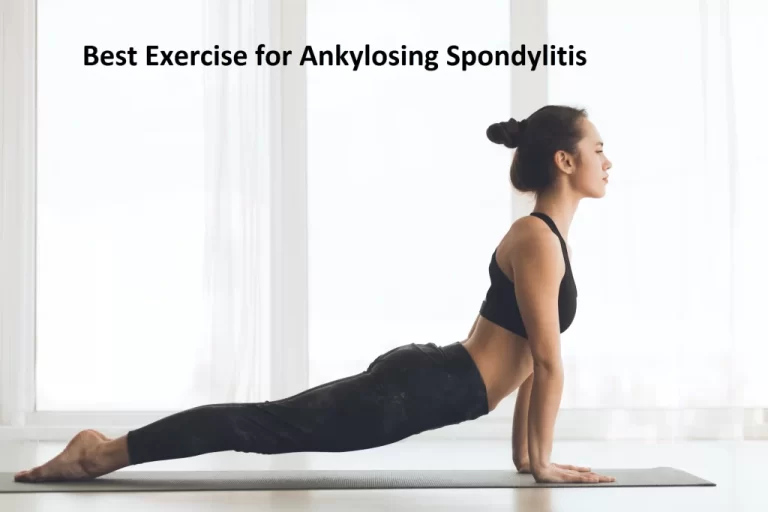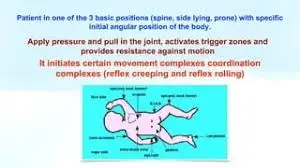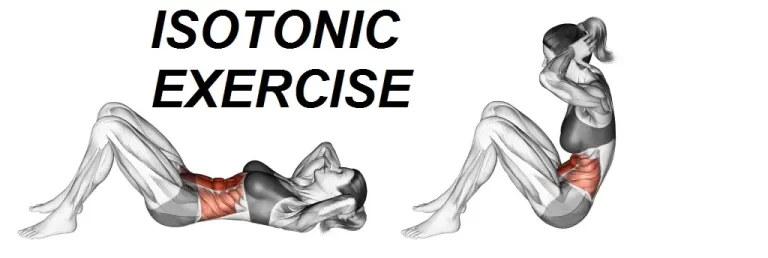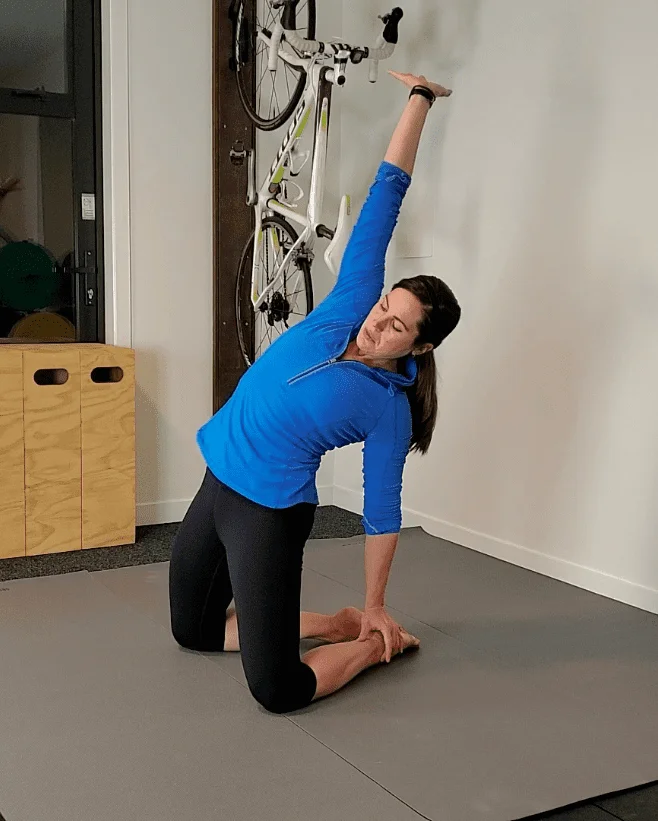12 Best Exercise For Prolapsed Intervertebral Disc Disease
Introduction:
When the disc material between the spinal vertebrae bulges or ruptures, it can cause prolapsed intervertebral disc disease (PIVD), also referred to as a herniated or slipped disc, which may press on close nerves. The posterior longitudinal ligament may become incompetent as a result of acute strains from sudden effort or bending, as well as vertical spinal instability. Back pain, leg sciatica, numbness, and weakness may follow.
Rest and medication may help in the acute stages. Still, Exercise For
Prolapsed Intervertebral Disc Disease (PIVD) is essential for long-term recovery and preventing recurrence in cases of PIVD. Usually an adult between the ages of 20 and 40, the patient has a sedentary lifestyle.
Causes:
A weak or torn outer layer (annulus fibrosus) allows the inner gel-like material of an intervertebral disc (nucleus pulposus) to push out, potentially compressing nearby spinal nerves. This condition is called prolapsed intervertebral disc disease (PIVD), sometimes referred to as a herniated disc, slipped disc, or disc prolapse.
Although the illness can develop at any level of the spine, it is most frequently observed in the lumbar spine (lower back).
Disc Degenerative Disease (Aging)
- The most frequent reason for disc prolapse.
- As it decreases, the outer layer is more likely to rupture or bulge.
- It usually starts after age 30 and advances gradually.
Overuse or Repetitive Strain
- Over time, the disc walls may become weakened by frequent twisting, bending, lifting, and high-impact exercises.
- Common among manual laborers, athletes, and those who use poor lifting techniques.
Sudden Trauma or Heavy Lifting
- Lifting a big object incorrectly or without enough core support might result in an unexpected disc rupture.
- Disc herniation can also be caused by trauma from accidents or injuries.
Being overweight
- An excessive amount of body weight puts additional mechanical strain on the spine, particularly the lower back.
- Makes disc degeneration and herniation more likely.
A genetic condition
- People who are born with thinner connective tissue or have a family history of disc issues are more likely to develop Prolapsed Intervertebral Disc Disease (PIVD).
Insufficient Exercise
- Weak back and core muscles, which are essential for spinal stability, result from a sedentary lifestyle.
- Particularly when doing daily chores, this increases the stress on disks.
Poor Body Mechanics and Posture
- Incorrect spinal alignment, prolonged sitting, or slouching puts more strain on discs, particularly in the lumbar region.
Smoking
- Smoking affects the discs’ ability to heal and receive nutrients by lowering blood flow to them.
- Promotes disc degeneration and weakens connective structures.
Exercise or weight training is done incorrectly.
- Overloading or improper form during activities like squats or deadlifts can cause the disc to rupture or wear down more quickly.
Factors related to psychology (less frequent)
- Increased muscular tension, bad posture, and unhealthful movement patterns can result from long-term stress and poor coping strategies, which can indirectly cause disc damage.
Signs and symptoms:
Depending on where and how severe the disc herniation is, Prolapsed Intervertebral Disc Disease (PIVD) can present with a variety of symptoms. When the material of the herniated disc compresses the spinal cord or nearby spinal nerves, symptoms appear.
Back pain
- Frequently, the initial sign
- May be acute, painful, or dull.
Weakness of Muscles
- Weakness in certain muscle units that are affected by nerve control
- Leg strength, ankle dorsiflexion (foot drop), or grip strength may be affected.
- It may make it challenging to move, lift objects, or do daily tasks.
Compression of the Nerve Roots Causes Radial Pain
- Radiating pain along the damaged nerve’s route
- Lumbar Prolapsed Intervertebral Disc Disease (PIVD): Sciatica pain that travels to the leg, foot, thigh, or buttock
Tingling or Numbness (Paresthesia)
- Where the squeezed nerve supplies blood.
- It frequently happens alongside radicular pain.
Changes in Reflex
- Reflexes in the arms, ankles, or knees are weakened or missing.
- Discovered during a neurological examination
Pain Made Worse by Movement
- Sitting, bending, coughing, and sneezing can all exacerbate pain because they raise disc pressure.
Changes in Posture
- One-sided bending (antalgic posture)
- Spine stiffness or forward flexion caused by guarding.
Exercise’s advantages:
People with Prolapsed Intervertebral Disc Disease (PIVD), also referred to as a slipped or herniated disc, can benefit greatly from exercise. To prevent more injuries, it is essential that any workout program be given approval and overseen by a medical professional or physical therapist.
Lessens Inflammation and Pain
- Pain can be lessened and strain on the spinal nerves reduced with the use of mild stretches and exercises.
- By increasing blood circulation, movement helps in the removal of inflammatory substances.
Increases Range of Motion and Flexibility
- By increasing flexibility, tight muscles around the spine can be stretched, allowing for the return of normal function and mobility.
Avoids Muscle Atrophy and Weakness
- Muscle weakness can result from prolonged rest.
- Strength is maintained or improved by targeted exercises.
Improves Posture
- Better posture is encouraged by corrective exercises, and this might lessen the strain on the intervertebral discs.
Encourages Recovery
- Through improved nutrition supply, controlled movement helps in tissue healing and keeps the disc in the federal reserve.
Develops Spinal Stability
- Building up the abdominal, pelvic floor, and back muscles can help stabilize the spine and reduce disc pain.
Lowers the Chance of Recurrence
- Exercise regimens that focus on flexibility and strength over time can help prevent disc issues in the future.
Improves Mental Well-Being
- Motivation and mood can be impacted by chronic pain.
- Frequent exercise improves tolerance and happiness by releasing endorphins.
Exercise for Prolapsed Intervertebral Disc Disease (PIVD):
Pelvic Tilts
- Begin by lying on your back.
- Next, bend both your knees.
- Make sure your neck is in line with your spine, and the back of your head touches the mat.
- Maintain the natural curvature of your back, allowing space between the mat and your lower back.
- Hopefully, you can move your hand inside this area.
- Breathe in.
- Then, contract your abdominal muscles as you release the breath, allowing your tailbone to tilt upward and compress the area between your lower back and the mat or floor.
- You’ll get a mild low back stretch.
- Hold this position for a few seconds.
- Then return to your neutral position.
- Then relax.
- Repeat these exercises 5 to 10 times.
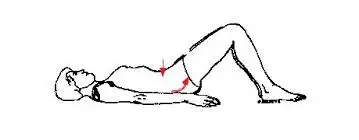
Wall Hamstring Stretch
- To begin, lie on the floor in a comfortable supine posture.
- The left leg must get through the wall.
- Place the right leg up against the entryway wall.
- To apply a modest strain on the right leg, change the distance between the body and the wall.
- Hold this position for a few seconds.
- Then return to your neutral position.
- Then relax.
- Repeat these exercises 5 to 10 times.
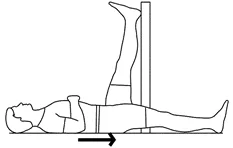
Knee-to-Chest Stretch
- Place yourself on the ground, lying down, to begin.
- Then bend your one knee.
- Keep the other knee straight.
- Pull one knee up to your chest once you have clasped your hands around it.
- Hold this position for a few seconds.
- Relax now and return to the beginning posture by lowering your knee.
- Then return to your neutral position.
- Then relax.
- Repeat these exercises 5 to 10 times.
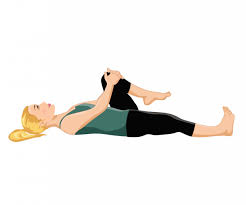
Seated Hamstring Stretch
- Take a seat upright in a chair with your spine in its natural posture and your shoulders rolled back.
- Raise one foot onto the seat of the chair across from you and straighten the other leg.
- The leg will feel stretched in both the calf and hamstring muscles.
- To make the spine longer, inhale.
- Exhale by bending your body forward over the leg that has been straightened.
- Hold this position for a few seconds.
- Then return to your neutral position.
- Then relax.
- Repeat these exercises 5 to 10 times.
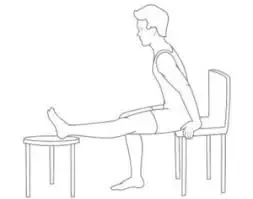
McKenzie Extension (Prone Press-Ups)
- Place yourself on your stomach.
- Under your shoulders, place your hands.
- Elevate your upper body by slowly straightening your arms.
- Hold this position for a few seconds.
- Then return to your neutral position.
- Then relax.
- Repeat these exercises 5 to 10 times.
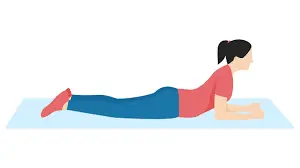
Bridge Exercise
- Lay flat on your back with both legs bent at the knees and your feet resting on the floor.
- Put your arms at your sides and point your palms down.
- Gradually elevate your pelvis before raising your back.
- Maintain your shoulders and upper body on the ground.
- Hold this position for a few seconds.
- Gradually drop the pelvis and return to the ground after starting at the top of the spine.
- Then return to your neutral position.
- Then relax.
- Repeat these exercises 5 to 10 times.
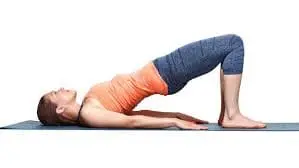
Supine hamstring stretch
- On your back, position yourself on a yoga mat.
- One leg should be lifted off the mat with the knee bent slightly.
- Put a resistance band over the sole of the outstretched leg.
- As near to your chest as seems comfortable, pull the leg.
- Hold this position for a few seconds.
- Then return to your neutral position.
- Then relax.
- Repeat these exercises 5 to 10 times.
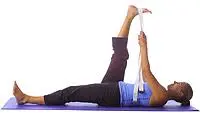
Wall Sits
- Set your feet approximately two feet from the wall, shoulder-width apart.
- To start, put your back to it.
- Move your back down the wall with caution, utilizing your abdominal muscles to get your thighs parallel to the floor.
- Ensure that your knees and ankles are in the correct position.
- Hold this position for a few seconds.
- Then return to your neutral position.
- Then relax.
- Repeat these exercises 5 to 10 times.
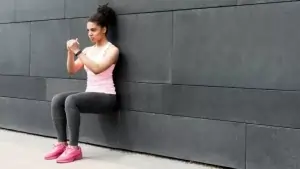
Lower back stretch
- Begin by lying on your back, flat.
- Bend your knees.
- The two hands should be used to pull each knee closer to the chest.
- Make a deep inhalation.
- Stretch to your comfort level, then hold that position for a few seconds.
- Breathe in slowly.
- Then return to your neutral position.
- Then relax.
- Repeat these exercises 5 to 10 times.
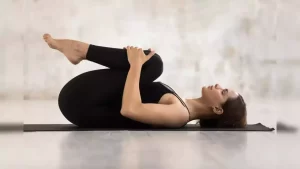
Sphinx Pose
- On your yoga mat, lie down on your stomach.
- Now, place your elbows beneath your shoulder blades.
- Your quadriceps and kneecaps should be used when you press the tops of your feet against the mat.
- As you take a breath, raise your upper body and apply pressure to the palms of your hands and forearms.
- Reach forward through the heart and make space between your neck and shoulders.
- Maintain a neutral stare and push yourself to the limit of your comfort zone.
- Send your breath to any tense area of your body by taking deep, regular breaths.
- Support yourself with your forearms and maintain the position for up to a minute.
- Pay more attention to your breathing and position than the depth of your backbend.
- Then return to your neutral position.
- Then relax.
- Repeat these exercises 5 to 10 times.
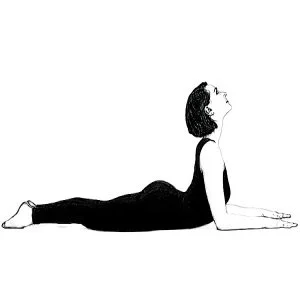
Bird dog
- Start with a tabletop position on the floor.
- To maintain a neutral spine, contract your abdominal muscles.
- Tighten your shoulder blades.
- Then lift your right arm and left leg.
- Stretch the back of your neck to look at the floor.
- Then lower your chin to your chest.
- Hold this position for a few seconds.
- Then return to your neutral position.
- Then relax.
- Repeat these exercises 5 to 10 times.
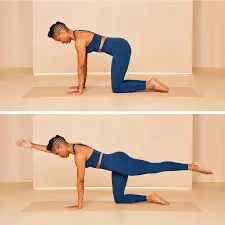
Piriformis Stretch
- Start with a comfortable lying down position on the floor.
- You should bend both knees.
- Now, place your left thigh close to your right ankle.
- Position your left hand underneath your leg.
- Pull your thigh toward your chest.
- Hold this position for a few seconds.
- Then return to your neutral position.
- Then relax.
- Repeat these exercises 5 to 10 times.
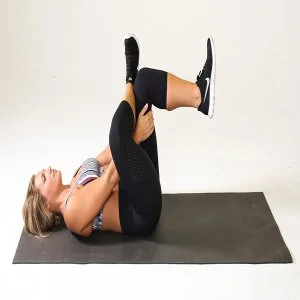
What safety measures must be followed when exercising?
Exercise safety is essential for people with Prolapsed Intervertebral Disc Disease (PIVD) to avoid worsening symptoms or injuring themselves more.
Speak with a Medical Professional First
- Before beginning any fitness program, always acquire a good diagnosis and approval from a spine expert or physical therapist.
- They can create a regimen that is suitable for your degree of pain and disc condition.
Begin slowly and advance gradually.
- Start with easy, low-intensity workouts and only get harder under supervision.
- Even if the pain has lessened, do not immediately go into more complex activities.
Warm Up Before Working Out
- To get your muscles and spine ready, warm up for five to ten minutes with light exercises like walking or dynamic stretching.
Make use of supportive surfaces.
- Use a yoga mat or other cushioned, firm surface for your exercises.
- To prevent back pain, stay away from extremely soft mattresses and hard flooring.
Prioritize flexibility and core strength.
- Give top priority to activities that develop flexibility without straining your spine, strengthen your core, and stabilize your spine.
Avoid Activities That Cause Pain
Avoid any workout that:
- Makes your legs or back hurt more
- produces tingling or numbness
- It feels awkward or sharp.
Breathe Normally
- During exercises, refrain from holding your breath (often referred to as the Valsalva maneuver) as this raises spinal pressure.
Keep Your Posture and Form Correct
- Make sure to line yourself properly and move with control with each movement.
- Bad form can exacerbate disc issues and put stress on the spine.
Take a Break When Necessary
- After a session, take a rest if you feel exhausted or have symptoms.
- Overtraining may result in flare-ups or postpone recovery.
When did you stop exercising?
When Acute Pain Is Increasing
When pain in the back suddenly gets worse, especially while bending or twisting, many individuals quit working out.
This could happen if they:
- Performed workouts without warming up.
- A lumbar herniation that involves forward flexion is an example of a movement that is not ideal for their disc level.
- Participated in unsupported or high-impact activities
Following Sciatica or Radiating Pain Experiences
- Exercise may be a sign of nerve root irritation if it results in pain that radiates down the leg, particularly past the knee.
When Tingling or Numbness Gets Worse
- Nerve compression may be indicated by symptoms such as tingling, numbness, or weakness in the legs, foot, or buttocks.
- It might be harmful to continue exercising in these situations.
Because of Insufficient Supervision or Guidance
When patients are uncertain, they may quit exercising, particularly if they:
- Uncertain about which motions are safe
- Fear is more harmful than beneficial.
- Give up when you don’t see progress.
When Pain After Exercise Is Too Prolonged
- Pain that doesn’t start right away and persists for more than 24 to 48 hours after working out might be a sign of incorrect technique or overuse.
Whenever Symptoms Recur or Get Worse
- When people resume their workouts too soon after feeling better, re-injury may result.
- If the pain returns, they might stop all activities rather than make the required changes.
Which exercises should you avoid if you have prolapsed intervertebral disc disease (PIVD)?
Exercises that put additional strain on the spine, particularly in the lumbar area, should be avoided if you have prolapsed intervertebral disc disease (PIVD), also referred to as a herniated or slipped disc.
Excessive weightlifting, particularly regarding spinal loading.
- Deadlifts
- Heavy-weight squats, particularly barbell back squats
- Overhead presses
- Leg press machine (lumbar spine hyperflexion)
Twisting or flexion of the spine
- Crunches or sit-ups
- Deep forward bends or toe touches.
- Russian twists
High-impact activities
- Jogging or running on hard ground
- Plyometrics or jumping
- Sports involving contact, including football and wrestling
Yoga poses or stretches that apply stress to the spine.
- Complete forward folds, Camel Pose, and Wheel Pose are examples of deep backbends.
- Seated Spinal Twist is one of the spinal rotation positions.
Summary:
The best long-term treatment for Prolapsed intervertebral disc Disease (PIVD) is exercise, even though medicine can help with short-term symptoms. Frequent postural, strengthening, and stretching exercises will greatly improve your quality of life and lessen episodes.
It is always advisable to start cautiously and develop a spinal health-specific regimen after consulting a qualified healthcare professional.
With cautious care, the majority of cases get well in weeks to months. Early exercise and posture correction interventions improve quality of life and help avoid recurrence.
FAQ:
What is the most effective PIVD exercise?
Low-impact stretches and strengthening activities like McKenzie extensions (press-ups), pelvic tilts, and core-stabilizing exercises like bridges are the ideal workouts for PIVD. The strain on the spinal nerves is reduced and the spine is supported by these motions.
Can someone with a prolapsed disk exercise?
With a prolapsed disc, you may and should exercise, but only under a doctor’s or physical therapist’s supervision. Recovery is made easier, and the long-term effects are decreased with gentle, guided movements.
Does PIVD benefit from walking?
Yes, walking is one of the safest and most effective low-impact workouts for patients with PIVD. It helps keep the spine mobile, improves circulation, and lessens stiffness.
In PIVD, which exercises should be avoided?
Avoid workouts that include high impact, twisting, or deep bending, such as jogging, heavy lifting, toe touches, sit-ups, or any other activity that worsens leg or back pain.
How frequently must I perform PIVD exercises?
As recommended by a physical therapist, PIVD exercises should be performed daily or at least four to five times a week for the best results. It’s more important to be consistent than intense.
Can a prolapsed disk be helped by yoga?
Indeed, some yoga postures, such as Child’s Pose, Cobra Pose, and Sphinx Pose, can promote healing and decrease stress.
How long does it take to heal from PIVD through exercise?
Exercise intensity and consistency affect recovery, although many people experience improvements in as little as 4–8 weeks. In more severe situations, additional treatment would be required, and the duration of the process might increase.
Is a visit to a physical therapist required?
Yes, it is very advisable to consult with a physical therapist. They can guarantee that you’re carrying out exercises safely and correctly and offer a customized fitness program.
Can physical activity stop PIVD from recurring?
Yes, by stabilizing the spine while improving posture, frequent core strengthening and back-supporting activities can dramatically lower the chance of recurrence.
Is it okay to work out when you’re experiencing pain?
A severe episode might require rest and pain management. If your doctor advises it, you can continue to move gently; however, stay away from intense activity at this time.
Is there a permanent cure for disc prolapse?
People with herniated disks recover on their own or with nonsurgical therapy. If other treatments don’t work to solve your issues, your doctor may suggest surgery. To relieve strain on your spinal cord and nerves, there are a number of surgical techniques available.
References:
- H. Physiotherapist. November 20, 2021. Physiotherapy is used to treat prolapsed intervertebral disc disease (PIVD). Samarpan Clinic for Physiotherapy. Prolapsed intervertebral disc disease pivd physiotherapy treatment exercise: https://samarpanphysioclinic.com/
- On January 23, 2024, Ocs, N. U. P. D. If you have a lumbar herniation, you should avoid doing the following. https://www.spine-health.com/blog/exercises-avoid-lumbar-herniation Spine-health
- A. Barrell (2024, Oct. 1). Safe Herniated Disk Exercises. This article can be found at https://www.medicalnewstoday.com/.
- Orthopedic Institute of NJ, 20 Herniated Disc Exercises & Stretches (n.d.). https://orthopedicnj.com/news/stretches-and-exercises-for-herniated discs
- The authors of the study are U. K. M. M. D. M. D. and U. K. M. M. D. M. D. (n.d.). | Portea. The following are some effective lumbar disc prolapse exercises: https://www.portea.com/physiotherapy/5
- Causes, symptoms, diagnosis, and treatment of prolapsed intervertebral disc disease (PIVD) – drashwanimaichand | Blogs (n.d.). There are several reasons why people get paid.
- On March 28, 2024, Rehab, R. P. &., & Rehab, R. P. &. ReLiva Physiotherapy offers treatment for disc prolapse and PIVD. Relive.in/prolapse disc/
- Fensome, H. June 13, 2023. The Top 8 Exercises for Lower Back Disc Bulges to Help With Low Back Pain. Health comes first. https://www.healthfirstosteopathy.co.uk/post/2019/06/06/lower-back-disc-bulges-the-8-best-exercises
- Image 7, Yoga: Use a strap to stretch the hamstrings in one leg.



